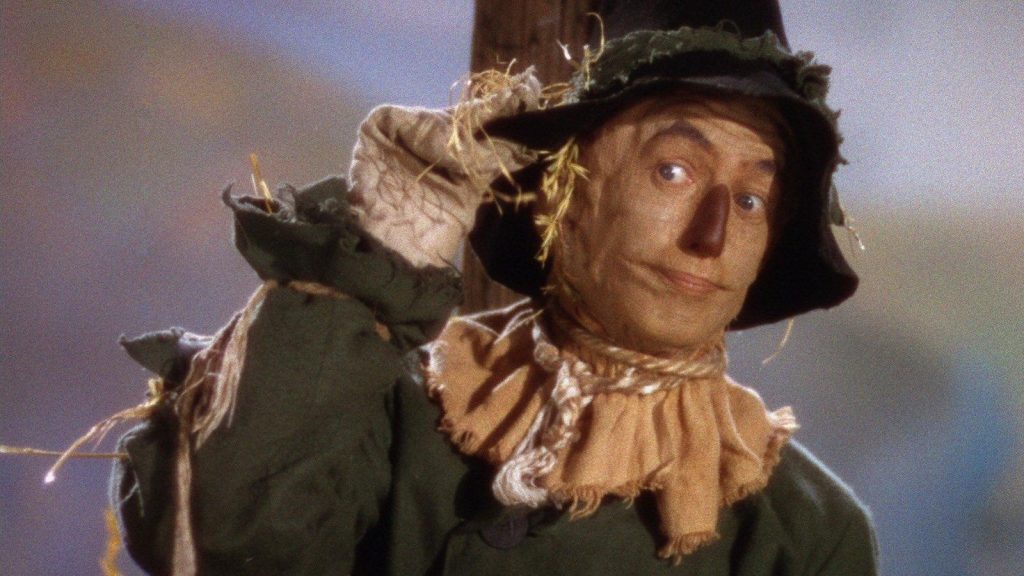Wicked: For Good neatly wraps up the story of Elphaba (Cynthia Erivo) and Glinda (Ariana Grande) that started in Wicked, but fans can’t wrap their heads around the many plot twists involving the Scarecrow.
The Scarecrow’s remixed appearance, origin story and role as Dorothy’s companion on the Yellow Brick Road has raised more questions than answers.
Here’s why fans are confused about the Scarecrow from Wicked: For Good.
Warning—spoilers ahead.
What Are ‘Wicked’ Fans Saying About The Scarecrow?
Wicked: For Good is an alternative take on the classic Wizard of Oz film, and the story makes huge changes to all of the characters, particularly the Scarecrow.
Some of those changes are quite awkward, considering the Scarecrow’s important role in Dorothy’s journey.
First off, his look—Wicked: For Good pays tribute to his design in The Wizard of Oz, making use of prosthetics for a surprisingly human appearance.
Fans poked fun at his unsettling face, and some even suggested that he resembled Ryan Reynolds.
The Scarecrow’s new origin story, however, is very difficult to fit into The Wizard of Oz.
In the original film, the Scarecrow is just that—a scarecrow, who inexplicably comes to life. No explanation is needed, Oz is just a magical place.
In Wicked: For Good, the Scarecrow is a human, Fiyero (Jonathan Bailey) who was transformed by Elphaba’s magic.
Fiyero is also caught in a love triangle between Glinda and Elphaba, reluctantly marrying Glinda, only to betray her to pursue Elphaba, his true love.
Fiyero sacrifices his own safety and comfortable life with Glinda to allow Elphaba to escape from Oz’s guards, but they beat him to within an inch of his life.
In desperation, Elphaba casts an unknown spell from a distance intended to protect Fiyero from physical harm. It works, but turns his flesh into sackcloth and straw.
Fiyero experiences that brutal beating, is permanently transformed into the Scarecrow, and is left hanging on a wooden pole, presumably rather confused, until Dorothy comes along and frees him.
Most of Dorothy’s journey takes place offscreen, and it’s obvious why. First off, this is Elphaba and Glinda’s story, but also, the Scarecrow’s encounter with Dorothy makes very little sense if his identity is Fiyero.
In Wicked: For Good, Scarecrow is a double agent, seemingly pretending to desire a brain, while helping Dorothy and the others find their way to the Wizard, who he knows is a shameless fraud.
He even agrees to go on a mission to find and kill the Wicked Witch, Elphaba, the love of his life.
It’s a jarring addition to a well-known tale, one that paints a picture of deep deception, from every direction—Dorothy is being fooled by every single person she meets, from Glinda to her three companions.
The Scarecrow’s dedication to the bit seems almost sociopathic, and fans gleefully shared clips and images from The Wizard of Oz to highlight the tonal clash.
Amusingly, the Wicked Witch in The Wizard of Oz seems to hate the Scarecrow—she attempts to burn him alive, several times, and orders her flying monkeys to literally tear him apart.
In an even weirder twist, the Scarecrow is seen holding a gun, in a brief scene in which Dorothy and her friends enter the dark forest looking to kill the Wicked Witch.
The gun doesn’t appear again—it’s a bizarre little easter egg in an unrelentingly strange movie—but it shows that Scarecrow is serious about taking down the Witch.
In the climax of the film, the Wicked Witch lights Scarecrow on fire, leading to Dorothy throwing water and accidentally melting the Witch. None of this, of course, makes the slightest bit of sense if one views these movies in continuity.
Other fans pointed out that those looking to poke plot holes were overthinking it. The Wizard of Oz is simply a setting for the story of Wicked, a familiar place for most filmgoers, but essentially fan fiction.
Both Wicked films are not meant to be truly canon to The Wizard of Oz—they’re a different perspective that creates a fresh character out of the Wicked Witch, who doesn’t even have a name in the original film.
Still, one does wonder what Dorothy and her friends talk about during their journey in Wicked: For Good—the Scarecrow must have been racking his apparently non-existent brain to pull off such a convoluted deception.

